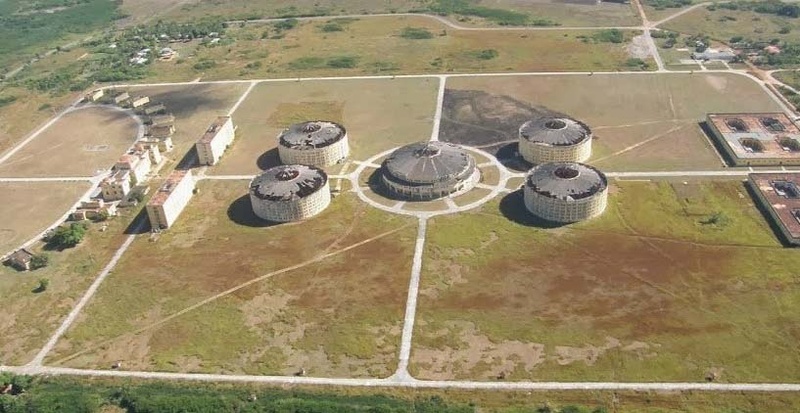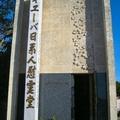From very early times, the Japanese organized themselves in associations 1 , in general sense it is stated that their purposes were relief and mutual aid, in addition to recreation, the promotion of immigration and friendly relations between Cuba and Japan. This is how the Association of Japanese Producers appears, in 1915, in Campo de Carmelina, in Cienfuegos. Also the Japanese Society of Cuba in Old Havana, already in 1927; the important Agricultural Cooperative of the Isle of Pines, in 1933, and there existed, without official representation, the Tomehachi Kobayashi Cooperative, on the Isle of Pines and the Japanese Showakai Association, with Keitaro Ohira as president, founded in January 1927.
In other places in Cuba, the existence of important groups of immigrants was known, with their descendants grouped in small colonies that had their internal organization and their natural leaders, but were never officially recognized, such as that of the Baraguá power plant in Ciego de Ávila. , a colony with about 40 Japanese in 1939 2 , that of Surgidero de Batabanó, made up of a group dedicated to fishing; also that of Jatibonico, that of Herradura, in Pinar del Río, and that of Banes, in the easternmost area of Cuba.
In 1929, during the presidential period of Gerardo Machado, diplomatic notes were exchanged with Japan, this was taken as a starting point in terms of diplomatic relations; All the previous time they were run by Japanese representatives accredited in Washington, which made it very difficult to care for immigrants living in approximately 46 places in the Cuban archipelago.
They suffered, together with the Cubans, the political, social and economic consequences of the bloody dictatorship of the then president of Cuba Gerardo Machado, which was overthrown in 1933. The country was sinking into chaos and to this was added the international problems that preceded the Second World War.
In 1939 the Second World War began and on December 1, 1941, Japan formally approved the war against the United States 3 . Faced with the conflict that the decisions of the Japanese government contained, an alarmed group of Japanese, alone or with their families, coming from various places in Cuba, decided to return to Japan and traveled to Havana to take any ship that would take them to Panama, to continue traveling to the native country, but this moment never came. So, some decided to stay in places near Havana, others moved to the Isla de Pinos and Pinar del Río, perhaps with the hope of not being found in these places 4 .
Testimony of the awareness of the imminent danger is the collection of letters, treasured in the National Archive of Cuba, sent by several Japanese residents in the country and addressed to the Minister of the Interior "to express their deep feelings regarding the entry of their country native to the war and affirm his disagreement with such an attitude, in order to demonstrate his non-belligerence and to have his citizen's attitude towards the authorities investigated in depth in case a security measure was decided against the Japanese nationals" 5 , but everything turned out in vain.
The entry of the United States into the war within the framework of World War II caused the Japanese and their descendants to be declared “war enemies.” Immediately, Cuba, on December 9, 1941, declared war on Japan and all Japanese residents in Cuba are considered a danger to national security, as they are considered “foreign enemies” 6 .
Japanese residents in Latin America were deported or sent to confinement camps in the United States. Cuba and Mexico were the only countries that created their own concentration camps and, in this way, kept the Japanese in their territories 7 . Compliance with the arrest warrant began throughout the country, which had different interpretations regarding its execution, according to the testimonies of the detainees' relatives, but all of them were painful and humiliating.
Thus, from April 16, 1942 to 1943, they were admitted to the National Prison for Men, or Model Prison, on the Isle of Pines (today called the Isle of Youth), approximately one hundred kilometers from the island of Cuba, practically inaccessible. and declared a concentration camp, three hundred and fifty Japanese; including nine of them descendants, that is, children of legal age who were born in the country. There, along with Italians and Germans, they complied with confinement for being “war enemies” of the Cuban government.
The position of Comptroller of Enemy Property was created, which empowered him to “manage” the belongings of Japanese residents in the country. These could be confiscated and sold at public auction.
The Spanish legation, commissioned by the Japanese Consulate, represented the Japanese because, at the government level, relations between Cuba and Japan were broken between 1942 and 1952.
Unprotected and persecuted, the family members were identified as possible collaborators of the “enemy.” Many destroyed or had everything destroyed that may or may not constitute an indication of suspicion: photos, letters, magazines, etc. Therefore, testimonies of family memory disappeared, only the images of the captures of the men of the family taken to unknown destinations remained in the minds of women and children.
When the multiple testimonies of Japanese descendants collected in recent years by different researchers 8 are analyzed, we find very valuable information about the lives of the inmates in terms of the prison regime, the organizational capacity to survive, the pain for those who died there, the longing for their loved ones, most of whom were unable to attend visits, and how the ties of these members of a community until then scattered throughout the Cuban archipelago were strengthened. The descendants today say that their parents closed this chapter of their lives and sealed it with silence. No one wanted to talk more about the confinement.
After the culmination of the Second World War in August 1945, they were the last “war enemies” to leave the prison, first the men with children and, lastly, the single, ruined, completely stripped of their property. The married men only found what the wives could keep. Many families survived thanks to the courage of Japanese mothers, the family unity and the solidarity of those Cubans who did not allow themselves to be carried away by the anti-Japanese propaganda spread by the government.
They started from scratch, to experience a new wandering, but now experts aware of the precariousness of their security, some returned to their place of origin, others decided to settle in new territories, in areas near Havana, others in the Zapata Swamp, On Isla de Pinos, a large number headed to the westernmost area of the large island, Pinar del Río. There the last Japanese colony in the Cuban archipelago was established, in Herradura, a municipality of Consolación del Sur and the last emigrant, a survivor of Hiroshima 9, arrived there, claimed by his family; For almost everyone it was clear that they should remain in Cuba. The return to his country, devastated by war and full of returnees, became increasingly distant.
After the San Francisco Peace Treaty of 1951, which granted independence to Japan, special agreements were made with Latin American governments to send emigrants and open diplomatic representations in them and in the Caribbean, with the Dominican Republic and Cuba.
Fulgencio Batista, who held the presidency of Cuba after a coup d'état in 1952, tried to organize his international relations in a country convulsed by popular protests, and managed to reestablish diplomatic relations with Japan on November 21, 1952 and with the diplomatic representations in embassies in 1957.
Despite the fact that “relations reached their highest degree of institutional formality after the opening of embassies in both capitals” 10 it is not known that there were conversations for the establishment of Japanese settlers in the country and the immigration process was stopped.
The dictatorial nature of the Cuban government as an obstacle for Japan in terms of sending settlers is ruled out, since at the same time they had reached an agreement with the tyrant Rafael Trujillo, president of the Dominican Republic, for this. In 1957, Cuba suffered a bloody insurrectionary struggle against the prevailing dictatorial regime, therefore there was no political will or conditions in the country to deal with Japanese migrations.
Appointments and Notes
1. Rafael Fernández Moya. “Japanese emigration in Old Havana.” Havana, December 2009. Álvarez. Op. Cit., pp. 181-183, and in Japanese Presence in Cuba (2002), Fernando Ortiz Foundation, Ediciones GEO (folding).
2. Mairyn Arteaga Díaz, The island of the confined , p. 131. See photograph of the Japanese colony in the Baraguá power plant and in Álvarez, Rolando, Op. Cit. In Annexes.
3. Adolfo A. Laborde Carranco. “ Japan, a historical review of its origin to understand its current challenges in the international context .” En-keys of thought , year V, no. 9, January-June 2011, pp. 111-130.
4. See Rolando González (2009), The Japanese saga in western Cuba . Sofía Collection, Essays, Ediciones Loynaz, Pinar del Río, pp.28-32.
5. Yiliana Monpeller Vázquez, “ The relations between Cuba and Japan between 1902 and 1957: Notes for a periodization ” in Observatory of the Economy and Society of Japan , Vol. 6. No.20. (June 2014).
6. Álvarez and Guzmán. Op.Cit., pp. 147-169.
7. Dahil M. Melgar Tísoc, “ The Japanese in Mexico and their descendants: The struggles for identity ”, Pacarina del Sur , year 3, no. 10, January-March, 2012.
8. Testimonies in The Island of the Confined by Mairin Arteaga (2016), in The Japanese Saga in Western Cuba by Rolando González, in Shamisen by Benita Iha, which refers to the Okinawans, those who appear in the work of Rolando Álvarez and Marta Guzmán, Japanese in Cuba and the testimonies of the literary contest From Japan I Carry With Me, for the 120th anniversary of the Japanese migration to Cuba 2018. Printed material.
9. González: Op. Cit.
10. Monpeller. Op. Cit.
Bibliography
Arteaga Díaz, Mairin (2016). The island of the confined . Editions Sed de Belleza, Santa Clara.
Álvarez, Rolando and Guzmán, Marta (2002). Japanese in Cuba, no 17 . La Fuente Viva, Fernando Ortiz Foundation Editorial, City of Havana.
Azuma, Eiichiro. “ Brief Historical Synopsis of Japanese Emigration, 1868-1998 .” In International Nikkei Research Project by JANM.
Chailloux Laffita, Graciela (2015). The work that crosses the sea. A chronicle about cheap labor in Cuba . CEDEM, University of Havana.
Fernando Ortiz Foundation (2002). The Japanese presence in Cuba. Centenary of the beginning of relations between Cuba and Japan. GEO Editions, Havana (folding).
González, Rolando (2009). The Japanese saga in Western Cuba . Loynaz Editions.
Iha Sashida, Benita Eiko, Julieta Fonte Iha (2002). Shamisen , Testimony. La Cruz Pinera Collection, El Abra Editions, Nueva Gerona, Isla de Pinos.
Laborde Carranco, Adolfo A. “ Japan, a historical review of its origin to understand its current challenges in the international context .” En-keys of thought , year V, no. 9, January-June 2011.
Monpeller Vázquez, Yiliana (2014). “ The relations between Cuba and Japan between 1902 and 1957: Notes for a periodization .” In Observatory of the Economy and Society of Japan , Vol. 6. No.20. (June 2014).
Melgar Tísoc, Dahil M. (2012). “ The Japanese in Mexico and their descendants: The struggles for identity ”, Pacarina del Sur , year 3, no. 10, January-March, 2012.
Sanmiguel, Inés (2006). “Japanese in Colombia. History of immigration, their descendants in Japan”, Journal of Social Studies , April 23, 2006, pp. 81-96.
Sarusky, Jaime (2010). “The Japanese, a journey without return” in The Two Faces of Paradise , Ediciones Unión, pp. 59-73.
Sarusky, Jaime (2010). “The Japanese community on the Isle of Youth” in The Ghosts of Omaja , Ediciones Unión, Havana, pp. 37-54.
The red sun in the setting (2010) (documentary). ARO Cine-Video in collaboration with Japan Foundation. Directed by Marina Ochoa.
© 2020 Lidia Antonia Sánchez Fujishiro





